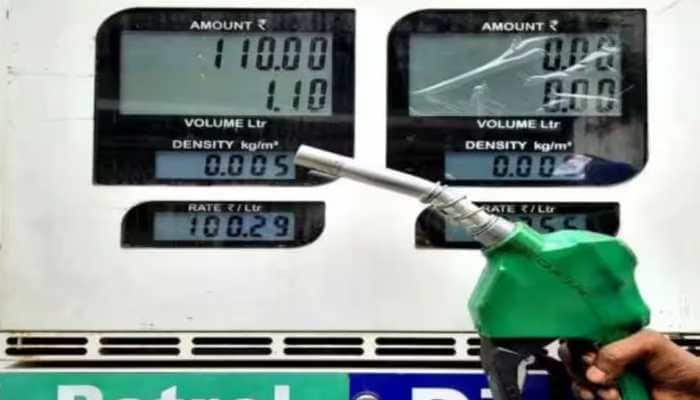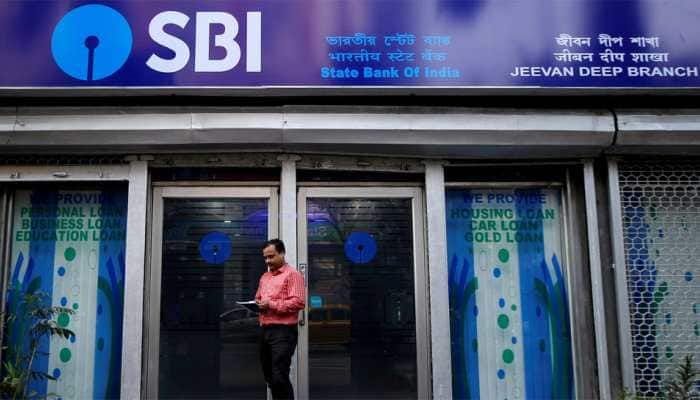Delhi saw eye-stinging smog as air quality neared the 'severe' zone today
Delhi pollution: People in the national capital breathe the worst air between November 1 and November 15 when stubble burning peaks.
- Delhi's AQI neared the 'severe' zone on Monday
- Stubble burning accounted for 22 per cent of the city's PM 2.5 pollution
Trending Photos
) Pic Credit: ANI
Pic Credit: ANI NEW DELHI: A layer of eye-stinging smog lingered over Delhi on Monday as its air quality neared the 'severe' zone with stubble burning accounting for 22 per cent of the city's PM 2.5 pollution. The city's 24-hour average air quality index (AQI) stood at 392 (very poor), worsening from 352 on Sunday. It was 354 on Thursday, 271 on Wednesday, 302 on Tuesday and 312 on Monday (Diwali). The Indian Agricultural Research Institute (IARI) reported 2,131 farm fires in Punjab on Monday, the highest so far this season, 1,761 on Sunday, 1,898 on Saturday, 2,067 on Friday and 1,111 on Thursday.
"Low wind speed allowed pollutants to accumulate in the air and the air quality index situation might deteriorate to "severe" Tuesday morning," Mahesh Palawat, vice president (meteorology and climate change), Skymet Weather said.
Farm fires and pollution
According to SAFAR, a forecasting agency under the Ministry of Earth Sciences, the share of farm fires in Delhi PM2.5 pollution stood at 22 per cent on Monday. It was 26 per cent on Sunday, the highest this year so far, and 21 per cent on Saturday.
Punjab | Stubble burning underway in parts of the state; visuals from the Gurthari area in Bathinda pic.twitter.com/oMkg2XuOnz — ANI (@ANI) October 31, 2022
Palwat said the transport-level wind direction and speed is favourable for transport of smoke from stubble burning.
Worst air between Nov 1 to Nov 15
According to an analysis by the Delhi Pollution Control Committee, people in the national capital breathe the worst air between November 1 and November 15 -- the period when stubble burning peaks.
The city records an average PM2.5 concentration of 285 micrograms per cubic metre from November 1 to November 15. PM 2.5 level from 61 to 120 is considered “moderate to poor”, 121 to 250 “very poor”, 251 to 350 “severe” and more than 350 is “severe plus”.
IARI reported 2,131 farm fires in Punjab on Monday, the highest so far this season, 1,761 on Sunday, 1,898 on Saturday, 2,067 on Friday and 1,111 on Thursday. It logged 70 and 20 cases of stubble burning in Haryana and Uttar Pradesh, respectively, on Monday.
The CAQM (Commission for Air Quality Management) had on Thursday said the increased incidents of stubble burning in Punjab this year "is a matter of serious concern". Environment Minister Gopal Rai said Punjab would have seen a large reduction in stubble burning had the Centre supported the state government's "mega plan" to provide cash incentive to farmers for not burning crop residue.
The minister informed that the Delhi government has resubmitted a file seeking Lt Governor Vinai Kumar Saxena's approval for the "Red Light on Gaadi off" campaign with evidence that such drives have reduced vehicular pollution in cities in India, the US and the UK.
Also Read: Delhi Govt announces 'Red light On Gaadi Off' campaign to reduce vehicular pollution
Addressing a press conference here, Rai said the L-G had put a hold on the campaign and returned the file on October 29 (Friday) questioning the effectiveness of such measures.
"We have answered all queries raised by the LG and resubmitted the file for his approval. Delhi is heading towards an emergency situation. We request the LG to give permission (to launch the campaign) as soon as possible," Rai said.
Under the campaign, first launched on October 16, 2020, to cut down vehicular pollution in the national capital, drivers are encouraged to switch off their vehicles while waiting for the traffic light to turn green.
The minister said a study by the Central Road Research Institute in 2019 showed that keeping the engine on at traffic signals can increase pollution levels by over 9 per cent.
Another study by the Petroleum Conservation Research Association (PCRA) under the Union Ministry of Petroleum and Natural Gas at the Bhikaji Cama Place traffic intersection showed that over 62 per cent people started switching off their vehicles after a similar campaign.
"We had considered these studies before launching the campaign in 2020," Rai said.
HDFC bank ran such drives at 126 traffic intersections in 40 cities across India on June 5, 2022, he said.
"We also found that similar campaigns were conducted in London, the UK, and North Carolina, the US," the minister said, adding that the government has sent all evidence to the L-G.
Citing data from PCRA, Rai had earlier said that if people switched off engines at traffic signals, pollution could be cut down by 15-20 per cent.
The minister also said that the incidents of stubble burning are increasing. "Along with unfavourable meteorological conditions, it can make the air quality situation worse.
"The Punjab government is doing all it can to reduce stubble burning, but the state would have seen a large reduction in farm fires had the Centre supported the state government's mega plan to provide cash incentive to farmers for not burning crop residue," he said in response to a question.
In July, the Delhi and Punjab governments had jointly sent a proposal to the Centre and CAQM to help them give Rs 2,500 per acre as cash incentive to farmers in Punjab for not burning stubble.
Stay informed on all the latest news, real-time breaking news updates, and follow all the important headlines in india news and world News on Zee News.
Live Tv







)
)
)
)
)
)
)
)
)
)
